My DIY Birth Flower Seed Bombs Are Always a Hit – They’re So Easy to Make and Perfect for Gifting
These personalized seed bombs are quick and easy to make and grow into beautiful blooms – they're a thoughtful DIY gift for any occasion.
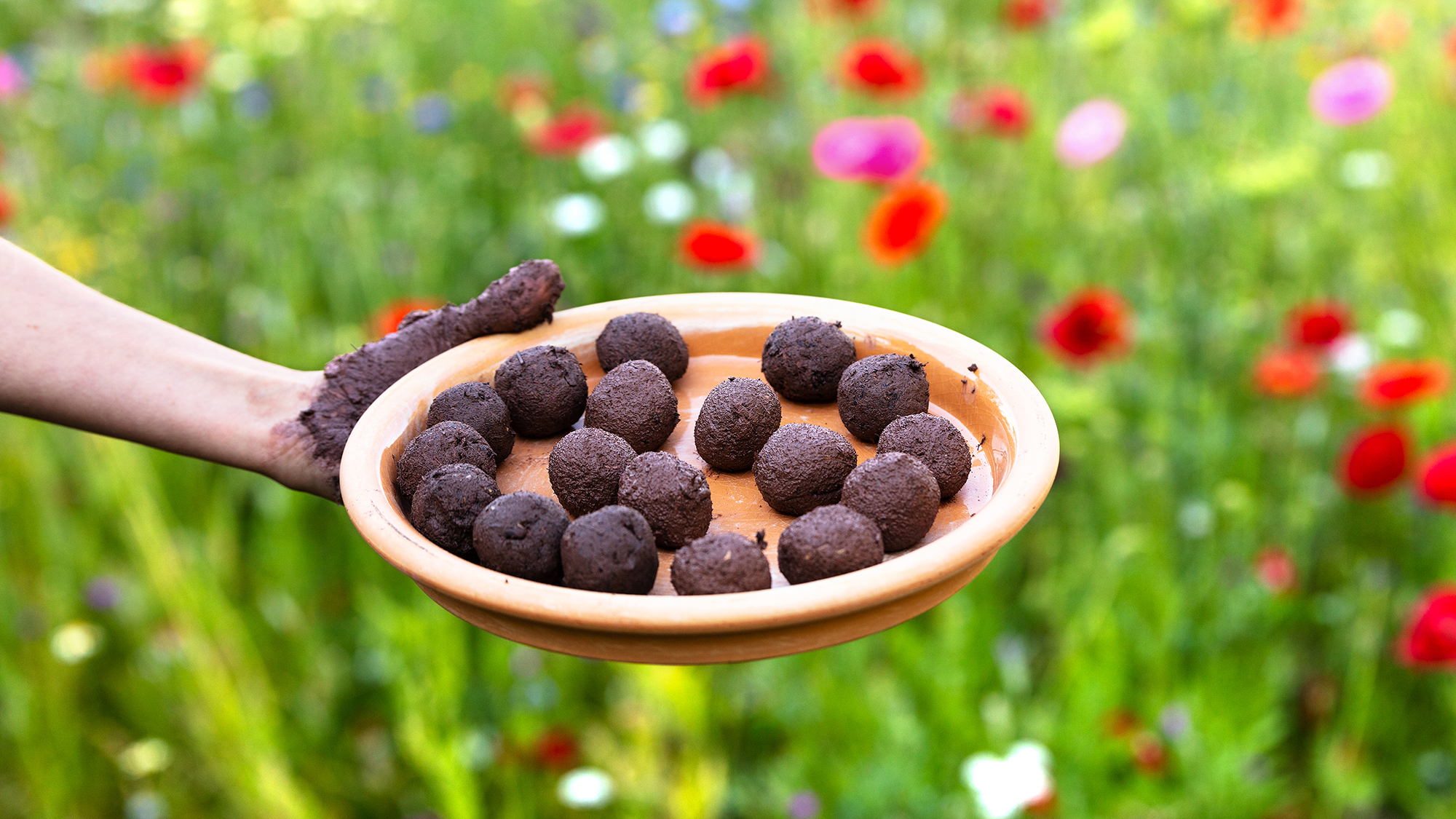

As a crafter, I love making personalized gifts for friends and family – but never more than when I get to combine my passion for gardening. A few years ago, I started making seed bombs (or seed balls, as they're also known). Not only are they a fun way to put something good into the world, but they're inexpensive, easy to make, and an ideal project for children and beginners.
Seed bombs are small balls made of clay, compost (or another growing medium like coir), and suitable seeds. They are scattered or planted where you want the flowers to grow. The clay serves to protect the seeds from birds and insects, and eventually will melt away, allowing the seeds to germinate in the soil.
At first, I used standard wildflower mixes, but eventually, I had the idea of making birth flower seed bombs to add an extra personal touch. Now, if you’re familiar with common birth flowers, you may already know that some traditional varieties (like bulbs or shrubs) don’t grow easily from seed. But I wasn’t going to let a minor challenge like that stop me! So, I gathered a complete list of alternative birth flower options that look and feel right for each month. Follow my easy step-by-step to make your own.
Seed Bomb Birth Flowers
While it's technically possible to make seed bombs for daffodils (March) and roses (June), the success rate would be lower, and they can take years to flower. So, with a bit of research, I created a list that includes alternatives for those trickier months.
While you can use the birth flower on its own, it's nice to mix in other flower varieties to get the best out of your seed bombs and extend the flowering season. Just make sure to use the birth flower as the star attraction.
Month | Traditional Birth Flowers | Seed Bomb Flowers | Sowing Season |
|---|---|---|---|
January | Carnation or snowdrop | Dianthus (pinks/Sweet Williams) belong to the same family as carnations and are easy to grow. | Spring |
February | Violet, iris or primrose | Wild violets are easy to grow from seed. | Fall/early spring |
March | Daffodil or jonquil | Daffodils take years to flower from seed. Instead, match their cheerful energy with Coreopsis (tickseed). | Spring |
April | Daisy or sweet pea | Shasta daisies – or daisy-like flowers such as chamomile – work. Sweet peas can be used, but need support. | Spring |
May | Lily of the valley or hawthorn | Delicate sweet alyssum is an early bloomer that echoes lily of the valley. | Fall or spring |
June | Rose or honeysuckle | Rose mallow has large hibiscus-like blooms that give a romantic rose-adjacent look. | Late spring to early summer |
July | Larkspur or water lily | Larkspur is suitable for seed bombs, but bear in mind the plants are toxic if digested. For a pet-safe blue flower, use bachelor buttons. | Fall or early spring |
August | Gladiolus or poppy | California poppy is perfect for seed bombs. | Fall or spring |
September | Aster or morning glory | New England aster works well, but annual aster gives quicker results. | Fall or early spring |
October | Marigold or cosmos | Cosmos is ideal for seed bombs. | Late spring to early summer |
November | Chrysanthemum or peony | Zinnias are late-season bloomers and many varieties have a similar look to chrysanthemums, with layered blooms. | Late spring |
December | Holly or narcissus | Red berry-like flowers mixed with pure white work beautifully – try scarlet flax or globe amaranth mixed with white cosmos or baby's breath. | Spring |
What You'll Need
This recipe makes 25-35 seed bombs.
- Clay powder – Around 8oz (225g). I used red Moroccan clay – specifically this mGanna clay from Amazon – because I love the rich look it gives. However, Fuller's Earth and pottery clay powder (not premade) are cheaper and also work well.
- Compost or coir – You only need a few tablespoons. I used this organic coco coir brick from Amazon. Otherwise, use regular potting compost – but not soil.
- Seeds – You'll need a pack of birth flower seeds, aiming for around 4-6 seeds per ball. It's nice to mix in other blooms with your hero flower – I mixed cosmos and zinnias to make these ones. This Burpee wildflower seeds cutting mix would make a lovely addition.
- Bags or fabric – For wrapping and presenting your seed bombs.
- Mixing bowl
- Water

Seed Bomb Step-by-Step
- Prepare your coir (or compost)
If using coir, break off a small piece and hydrate with a little warm water for a few minutes. If using compost, just keep it to one side until you have your clay ready.

- Mix dry ingredients
In a bowl, combine your clay powder with the coir or compost. Aim for around 3 parts clay to one part compost – though you don't have to be too precise. Add your seeds and mix well.
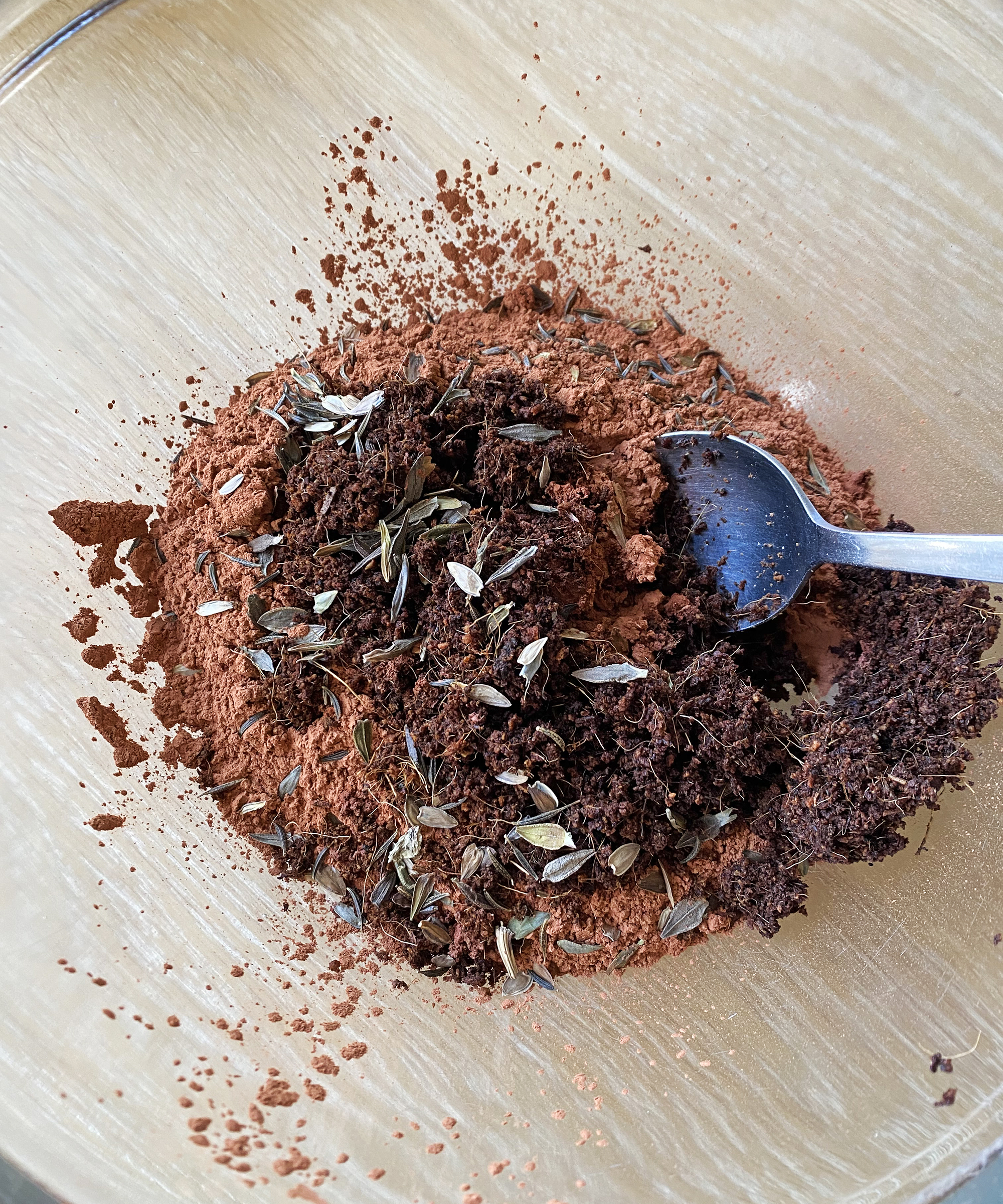
- Add water slowly
You only need 2-4 tablespoons of water, so add one at a time and mix well after each addition. The desired texture is like crumbly dough that holds together in a ball when squeezed. You don't want it to be muddy or runny.
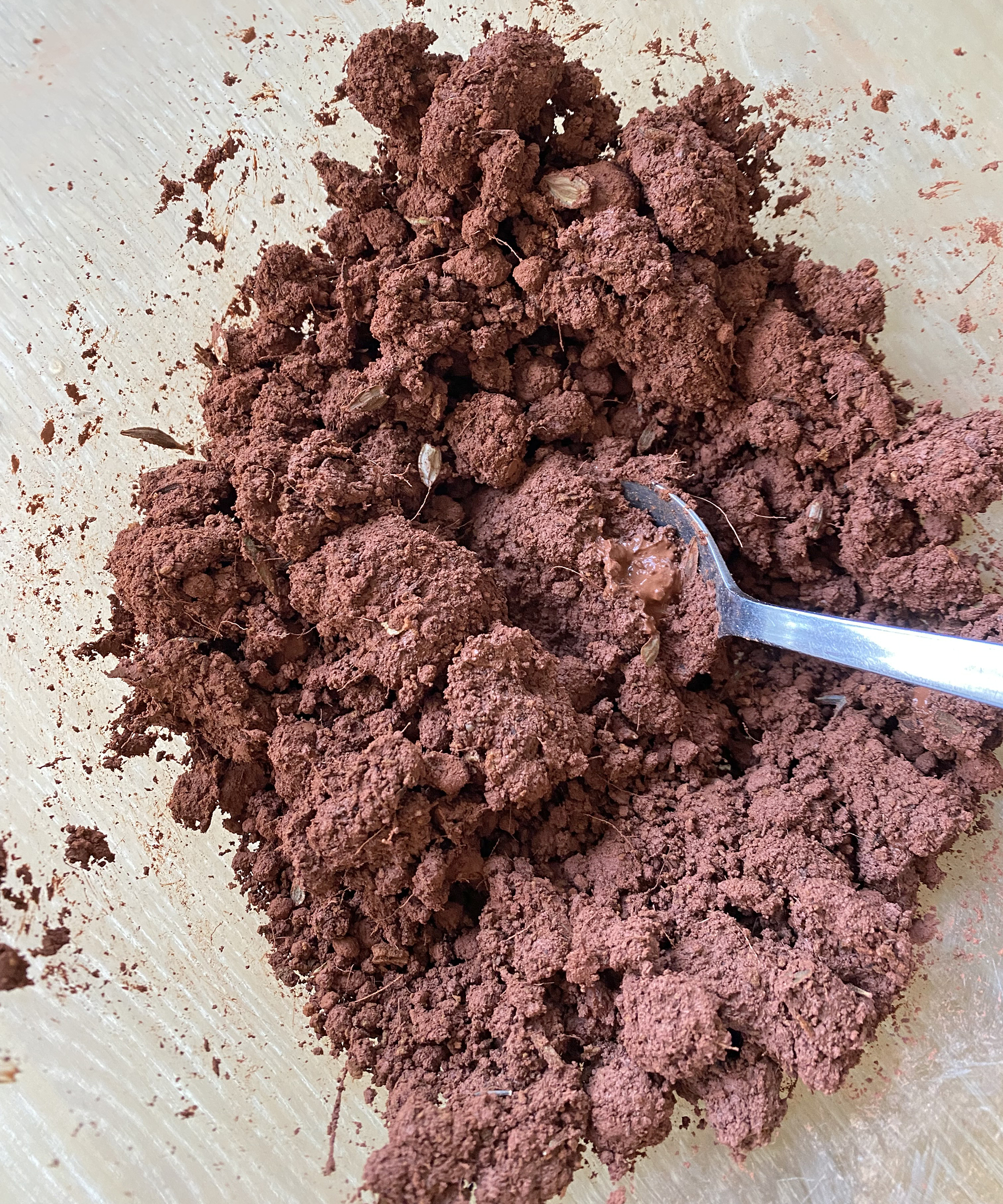
- Roll into balls
Time for the fun part! Take a small amount of the mixture and roll into a ball the size of a marble – maximum 1 inch (2.5cm) diameter. Try not to go too big, or they'll produce big seedling clumps.
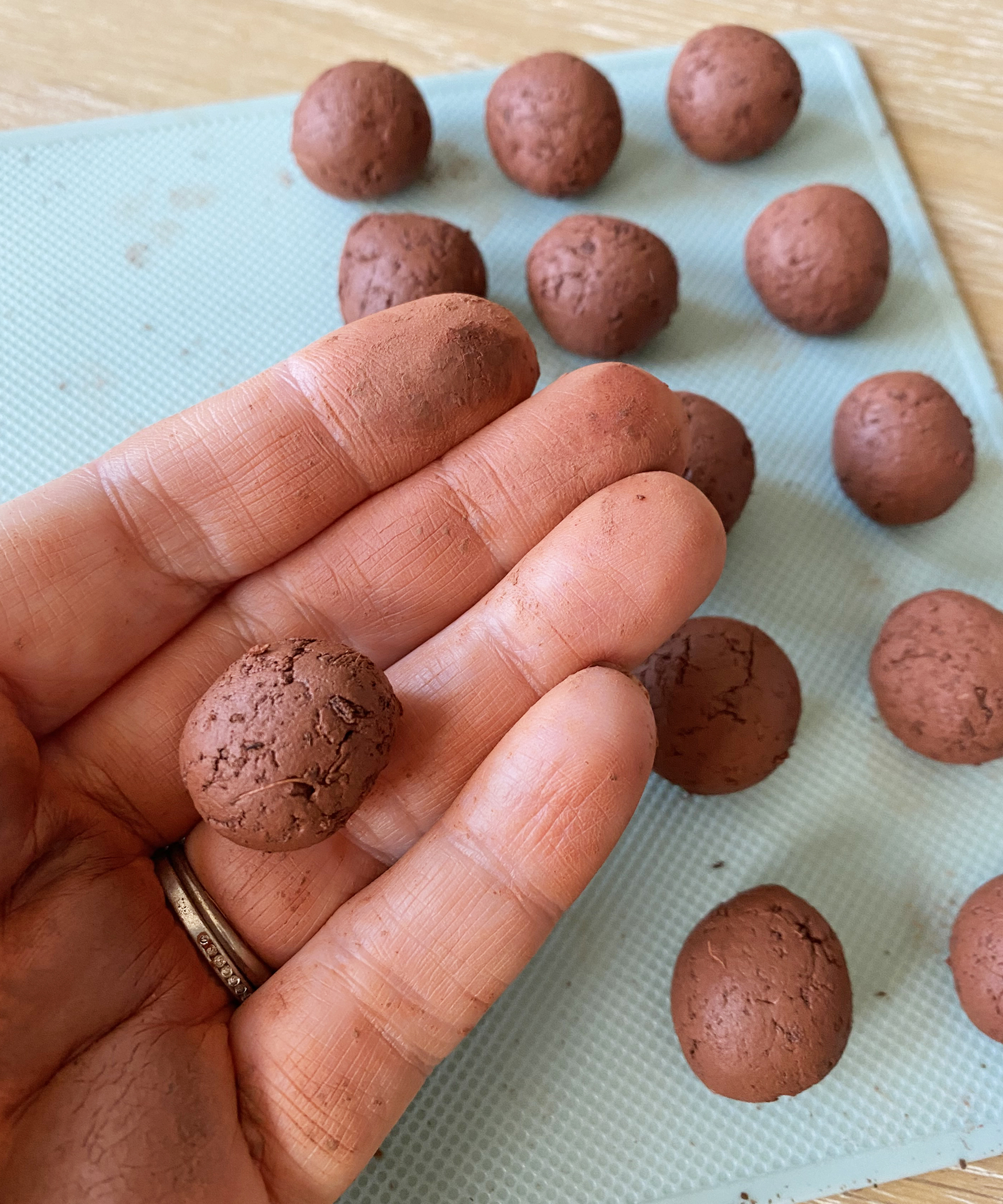
- Dry the seed bombs
Place them on a tray or parchment paper, and let them dry out for 24 to 48 hours. Mine took about 24 hours. Once dry, they should feel hard on the outside, but still slightly gritty.
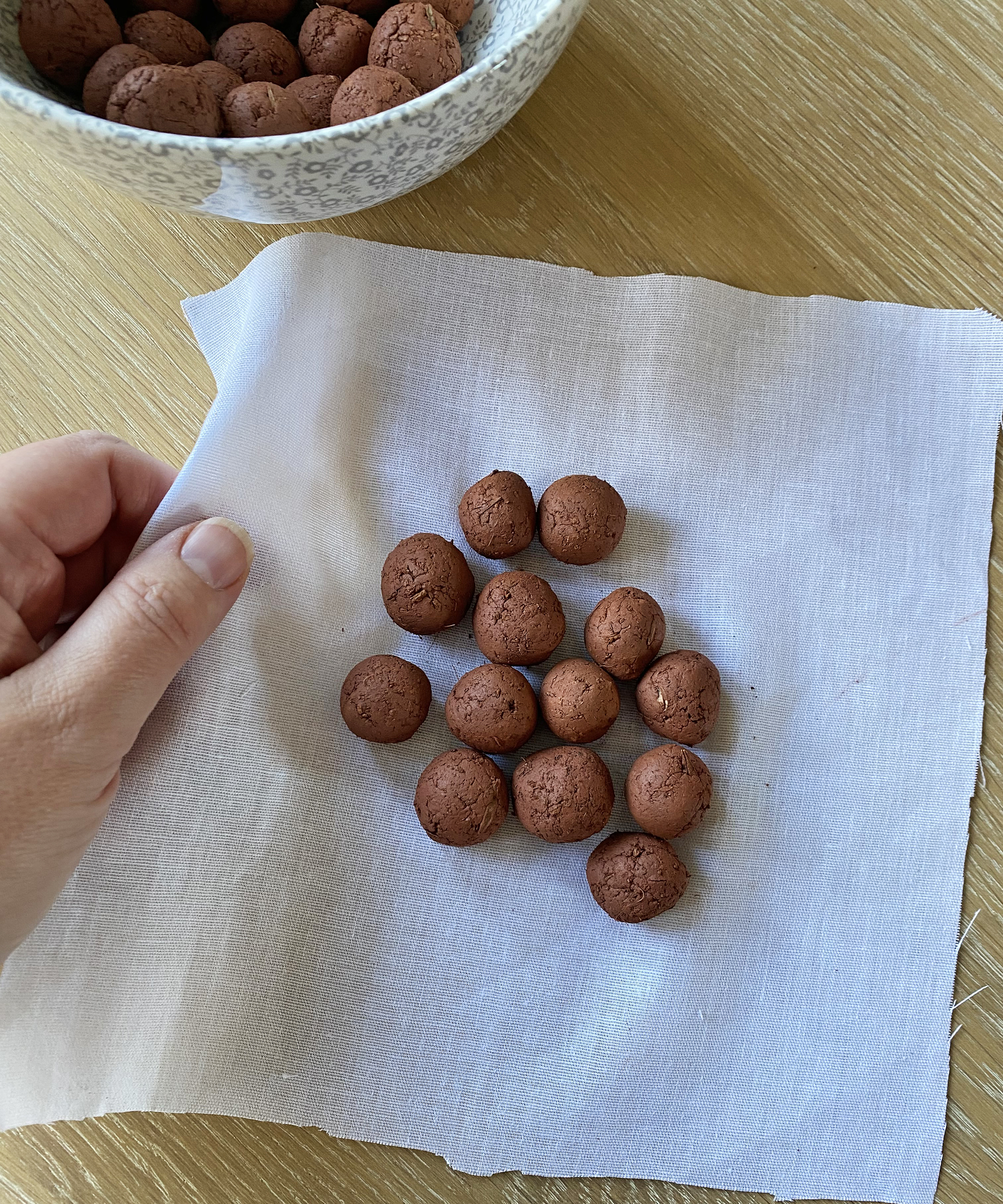
- Wrap them up
Use a breathable material, such as paper or fabric, to wrap and present them in. I cut up some muslin fabric and added a small ribbon, but these Hopttreely sheer organza bags on Amazon would add a lovely finishing touch.

Sowing Seed Bombs
Ensure you tell your recipient the ideal time to scatter their seed bombs (usually fall or spring). They respond well to being sown just before a rain shower. Choose an open, sunny spot – empty patches or the edges of beds work well. Either scatter them then gently, or space them out naturally – a handful per square yard.
Sign up for the Gardening Know How newsletter today and receive a free copy of our e-book "How to Grow Delicious Tomatoes".
Seed bombs should sit on the earth, so resist the urge to push them into the soil. If there is no rain, then give them a light watering to get them started.
Annual flowers should flower that year, while perennials will start to grow but may not flower until the following year.

Melanie is an experienced gardener and has worked in homes and gardens media for over 20 years. She previously served as Editor on Period Living magazine, and worked for Homes & Gardens, Gardening Etc, Real Homes, and Homebuilding & Renovating. Melanie has spent the last few years transforming her own garden, which is constantly evolving as a work in progress. She is also a passionate organic home grower, having experimented with almost every type of vegetable at some point. In her home, Melanie tends to an extensive houseplant collection and is particularly fond of orchids.